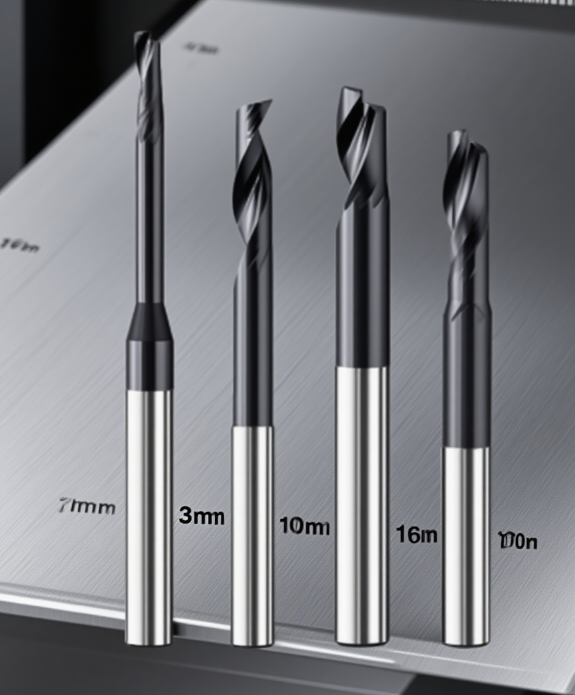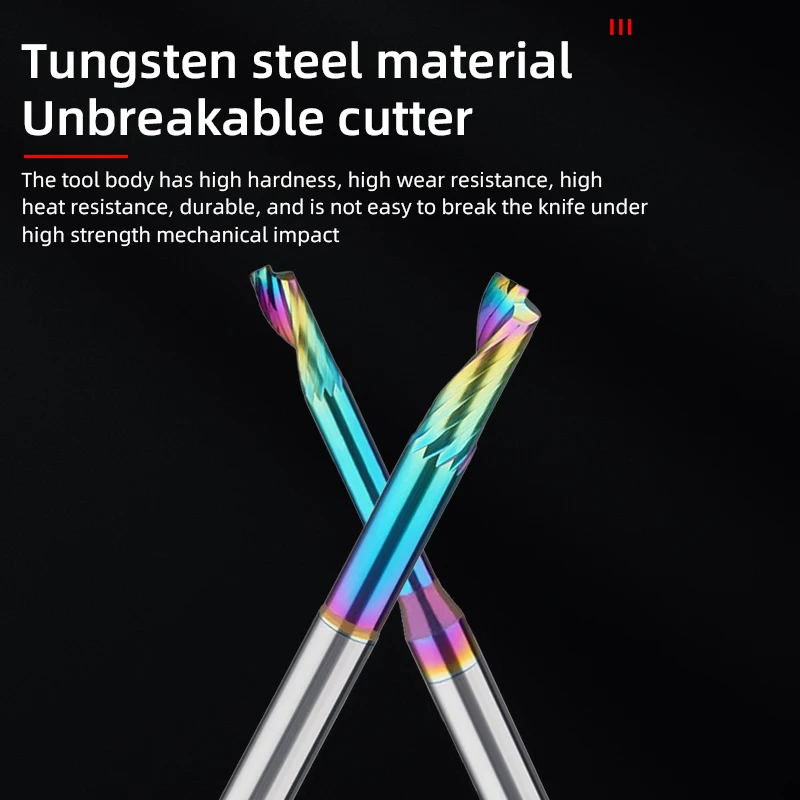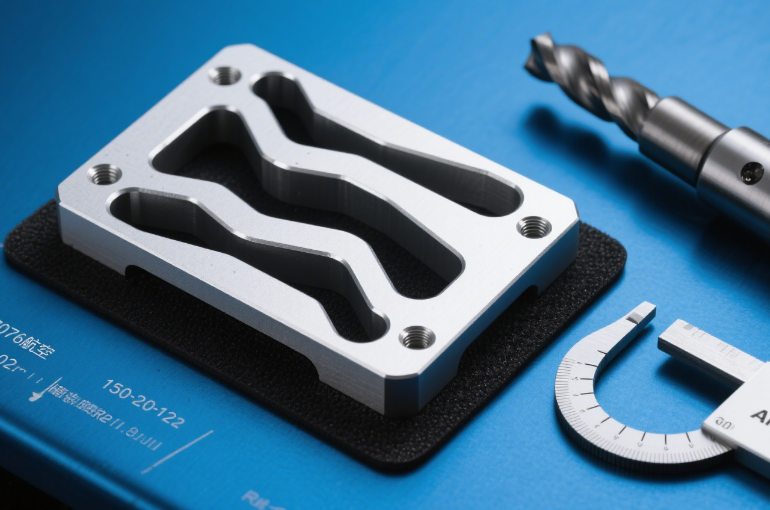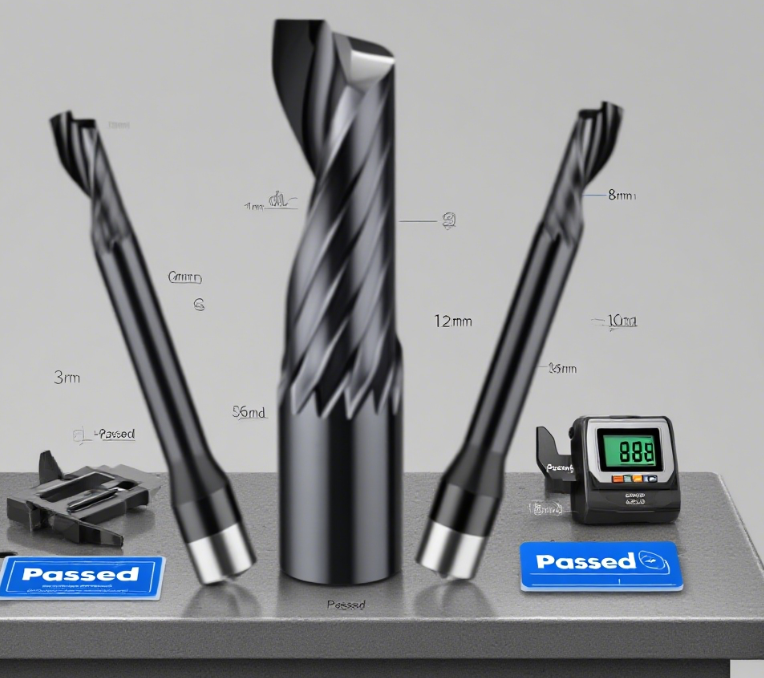Arestun 1-Flute Solid Carbide End Mills: Precision Tools for Aluminum Machining

When it comes to machining aluminum—whether for aerospace components, automotive parts, or custom prototypes—having the right tool can make all the difference. Arestun’s solid carbide 1-flute end mills, designed specifically for aluminum cutting with a DLC (Diamond-Like Carbon) coating, stand out as a top choice for machinists seeking speed, precision, and surface quality. This blog explores their unique specifications, optimal usage techniques, and real-world applications, highlighting why they’re a game-changer for aluminum machining.
What Makes Arestun 1-Flute End Mills Ideal for Aluminum?
Aluminum is a soft, ductile material that poses unique challenges: it can gum up cutting tools, cause chip buildup, and leave rough surfaces if not machined properly. Arestun’s 1-flute end mills address these issues with key design features:
- Solid Carbide Construction: Tungsten carbide provides exceptional rigidity and wear resistance, ensuring the tool maintains its sharp edge even during high-speed machining.
- Single Flute Design: Unlike multi-flute end mills, the single flute creates a large chip pocket, allowing efficient chip evacuation—critical for preventing aluminum from welding to the tool or clogging the cut.
- DLC Coating: The diamond-like carbon coating reduces friction, repels aluminum adhesion, and enhances heat resistance. This coating keeps the tool cool and minimizes wear, extending its lifespan.
- Optimized Geometry: A sharp, high rake angle on the cutting edge slices through aluminum cleanly, reducing cutting forces and avoiding work hardening.
Key Specifications: Choosing the Right 1-Flute End Mill
Arestun’s 1-flute end mills come in a range of specifications to suit different aluminum machining tasks:
Diameter Options
- Small Diameters (3mm–6mm): Perfect for precision work, such as machining intricate slots in aluminum brackets or drilling small holes in electronic enclosures.
- Medium Diameters (8mm–12mm): Versatile for general-purpose tasks, including face milling thin aluminum plates or cutting grooves in automotive trim parts.
- Large Diameters (15mm–20mm+): Designed for heavy-duty removal, like roughing out large aluminum blocks or creating deep cavities in mold bases.
Length Variations
- Short Lengths (2–3x Diameter): Offer maximum stability for high-speed finishing passes, ensuring minimal vibration and superior surface quality.
- Long Lengths (4–5x Diameter): Ideal for reaching deep recesses or machining tall aluminum workpieces, such as aircraft structural components.
Shank Types
- Straight Shanks: Compatible with standard collets in most CNC milling machines.
- Weldon Shanks: Feature a flat section for secure clamping in high-torque applications, preventing slippage during aggressive cuts.

How to Use Arestun 1-Flute End Mills: Pro Tips for Aluminum
To maximize performance and avoid common pitfalls when machining aluminum, follow these best practices:
- Secure Mounting: Use a rigid collet or endmill holder to clamp the tool, ensuring no runout. Even minor wobble can cause vibration, leading to poor surface finish or tool damage.
- Optimize Speeds & Feeds:
- Spindle Speed: Aluminum thrives at high speeds—10,000–20,000 RPM (depending on diameter). Faster speeds reduce chip adhesion and keep the cut clean.
- Feed Rate: Aim for 500–1,500 mm/min. The single flute’s large chip pocket handles high feed rates without clogging.
- Coolant Strategy: Use air blast or light mist coolant to blow chips away. Avoid heavy flood coolant with aluminum, as it can mix with chips to form a paste that clogs the flute.
- Depth of Cut: For roughing, use 1–2x the tool diameter per pass to maximize material removal. For finishing, reduce to 0.1–0.5mm for a mirror-like surface.
- Avoid Premature Wear: Inspect the DLC coating regularly. If it wears thin (signaled by aluminum buildup or dull edges), replace the tool to maintain precision.

Primary Applications: Where These End Mills Excel
Arestun’s 1-flute end mills shine in industries that demand high-quality aluminum parts:
1. Aerospace & Aviation
Aluminum alloys like 7075 are widely used in aircraft frames, wing components, and fuel system parts. The end mills’ precision and speed make them ideal for machining lightweight, high-strength parts with tight tolerances (±0.01mm).

2. Automotive Manufacturing
From intake manifolds to decorative trim, automotive aluminum parts require both efficiency and aesthetics. These end mills quickly remove material for roughing and deliver polished finishes, reducing the need for post-machining polishing.
3. Electronics & Consumer Goods
Thin aluminum sheets and small components (e.g., laptop casings, smartphone frames) benefit from the end mills’ precision. The single flute avoids distortion in thin materials, ensuring straight edges and clean corners.

4. Custom Fabrication & Prototyping
Hobbyists and small shops rely on these end mills for prototyping aluminum parts. Their versatility allows quick switches between roughing and finishing, speeding up the design iteration process.
Why Arestun 1-Flute End Mills Stand Out for Aluminum
- Superior Chip Evacuation: The single flute eliminates chip clogging, a common issue with multi-flute tools in aluminum.
- DLC Coating Durability: Reduces tool wear by up to 50% compared to uncoated carbide, lowering replacement costs.
- High-Speed Performance: Enables faster cycle times without sacrificing surface quality—critical for high-volume production.
- Versatility: Handles everything from thin sheets to thick blocks, making it a one-tool solution for many aluminum projects.
Whether you’re machining aircraft parts, automotive components, or custom prototypes, Arestun’s solid carbide 1-flute end mills with DLC coating deliver the speed, precision, and reliability aluminum demands. Invest in the right diameter and length, master the high-speed setup, and elevate your aluminum machining results.





